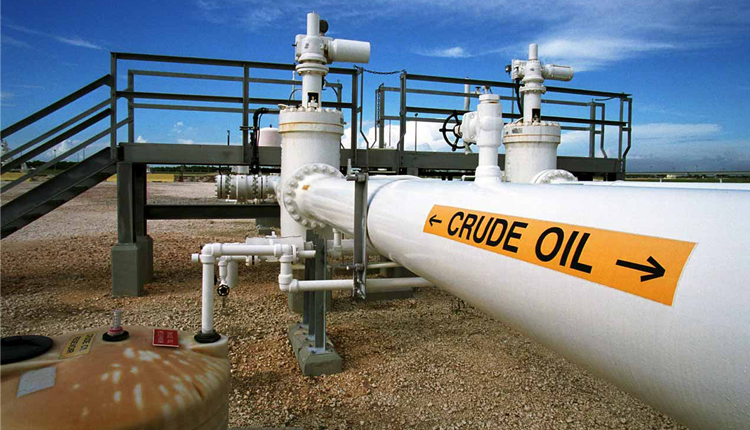Oil tumbled as much as 4% on Friday, extending early losses after President Donald Trump said he told OPEC to take action to temper fuel costs.
Still, U.S. West Texas Intermediate crude futures settled $1.91 lower at $63.30 per barrel, plunging 2.9% on the day and ending the week down 1.1%. WTI had been on track for its eighth successive weekly gain, the longest weekly run since the first half of 2015.
Brent crude futures fell $2.20, or 3%, to $72.15 per barrel, after hitting a one-week low at $71.31. Brent ended the week just barely positive, eking out a fifth weekly price gain, its longest winning streak in a year.
“The gasoline prices are coming down. I called up OPEC. I said, ‘You’ve got to bring them down. You’ve got to bring them down,’ and gasoline’s coming down,” Trump told reporters en route to a National Rifle Association event in Indianapolis.
In fact, the national average for a gallon of regular gasoline is $2.883 per gallon, up from $2.877 a day ago and $2.839 a week ago, according to AAA. U.S. gasoline futures have ticked lower in recent days, but are still up about 10% from a week ago.
Shortly before the settlement, the Wall Street Journal cited sources who denied that Trump discussed the matter with several high-level officials. The phone conversation that Trump claimed to have did not include OPEC Secretary General Mohammed Barkindo, Saudi Crown Prince Mohammed bin Salman and Saudi Energy Minister Khalid al-Falih, the sources said.
Moments later, Trump doubled down on his claim on Twitter, saying “Spoke to Saudi Arabia and others about increasing oil flow. All are in agreement.”
Earlier this week, the administration said it will not extend waivers that allow several countries to continue buying Iranian crude despite U.S. sanctions on the Islamic Republic. Oil prices surged more than 3% in the two days following the announcement.
“This shows that he’s very sensitive to oil prices,” said John Kilduff, founding partner at energy hedge fund Again Capital. “The day before it looked like the administration was undertaking this effort no matter what happened to oil prices. His tweet just completely undercut that stance.”
Administration officials said on Monday they have secured commitments from Saudi Arabia, UAE and other allies to fill any gap left by the anticipated drop in Iranian supplies.
However, Falih said earlier this week that there is no need to immediately start pumping more oil, and the kingdom will hike output only after customers ask for more supplies.
“The market was all bulled up on the reticent Saudis, and the president had been quiet there for a couple weeks,” said Kilduff. “So I think when that hit, it obviously shook up the market.”
Kilduff said unsubstantiated rumors that the administration will extend Iran sanctions waivers to China were spreading through the market and contributed to the gain.
China, the world’s biggest buyer of Iranian oil, has formally complained to the United States.
Despite U.S. efforts to drive Iranian oil exports down to zero, many analysts expect some oil to still seep out of the country.
Energy consultancy FGE said “400,000 to 500,000 barrels per day of crude and condensate will continue to be exported,” down from around 1 million bpd currently.
Jefferies bank saw 500,000 to 600,000 bpd, adding “at least China and potentially India and Turkey will continue to import Iranian crude.”
The drop followed Brent’s rise above $75 per barrel for the first time this year on Thursday after Germany, Poland and Slovakia suspended imports of Russian oil via a major pipeline, citing poor quality.
The move cut parts of Europe off from a major supply route. Russia has said it planned to start supplying clean oil via a pipeline on April 29.
Source: Reuters
